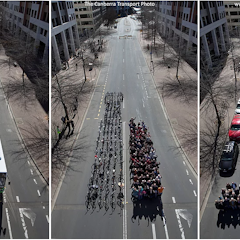
Articles on Mobility
Displaying 21 - 40 of 46 articles

Over US$33 billion was invested in mobility tech last year in response to claims it will transform our lives. Based on what we have seen so far, which of these promised solutions will be delivered?

In major cities around the world, dockless scooters and bikes are everywhere, yet the companies themselves are often breathtakingly short-lived. Basic economic concepts give us clues why.

Shared e-scooter programs may seem like a green way to get around, but these small vehicles can have big environmental footprints.

Cities must manage all the competing uses for limited roadside space to avoid congestion and maximise efficiency. And that begins with reliable data.

Every day, e-scooters and helmets are put out together, but some people ride without helmets and at the end of each day helmets are missing. So what can be done to ensure safe riding behaviour?

The exploding popularity of e-scooters has the potential to reshape transport in our cities. Regulators need to adapt their approaches to handle the new mobility service rather than ban it altogether.

Newly found fossils point to a link between a rise in atmospheric oxygen and the first emergence of complex life on Earth.

Investment is pouring into urban technology, much of it into innovative ventures that aim to transform how we get around our cities.

Apps that seamlessly combine all our travel options could be the most significant transport innovation since the automobile, but early trials show government policy support is vital to make MaaS work.

Blind belief that new technology and disruptive innovation will fix congestion in our cities overlooks the need for strong leadership that supports progressive policy innovation.

‘The Right Trousers’ combine soft artificial muscles and electric stimulation to get people moving.

The spread of infectious diseases such as chikungunya is closely linked to urban mobility, yet small Indian cities could play a crucial role in the resilience process.

It’s critical to understand how mothers from all backgrounds navigate obstacles within the city as part of their daily lives.

What does it mean to have a cosmopolitan identity?

When it comes to robotics, the future is not two-legged.

Millions of Americans rely on public transit to get to school, work or stores, but many can’t get the service they need. ‘Uberizing’ transit by offering more options on demand could fill the gaps.

Fitness, strength and mobility are important for us to live happy and healthy lives, how much does walking improve these measures?

For those with reduced mobility and even just the normally aging, stairs can pose a big problem. A cheap and efficient new prototype could help.

Highly trained dancers provide insights for researchers helping design improved rehab programs for people with mobility impairments. The next step could include rehab robots as dance partners.

Australians are living longer, and digital technologies could help them take control of retirement.
